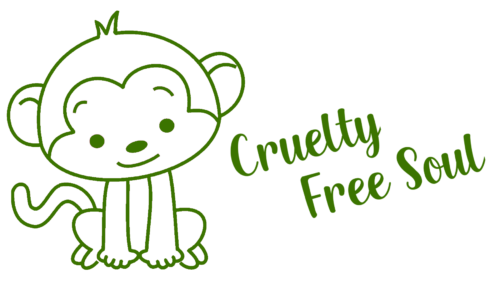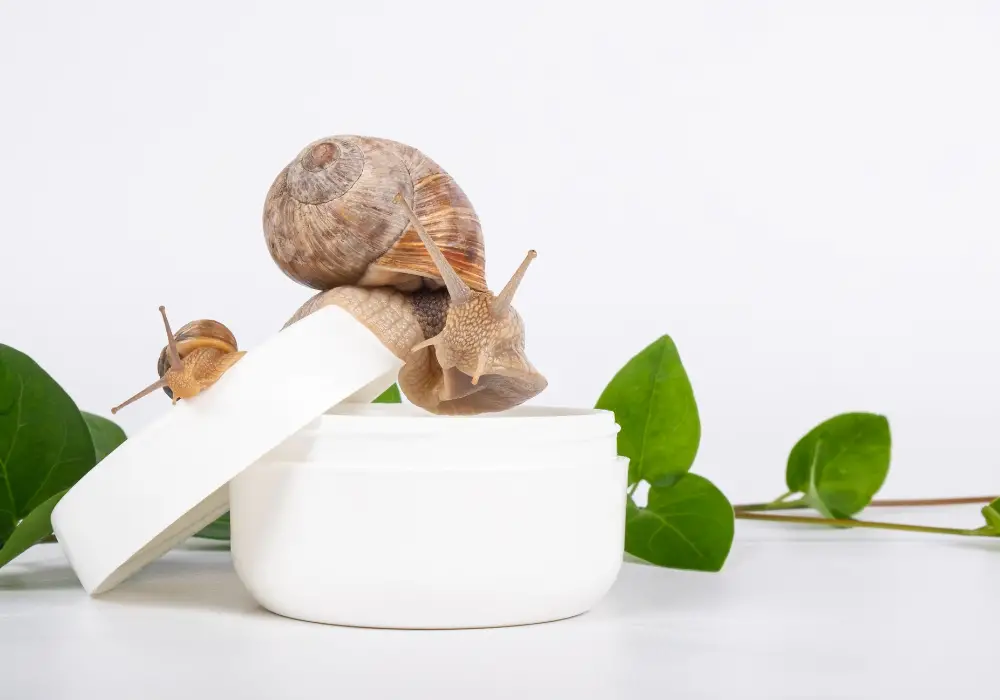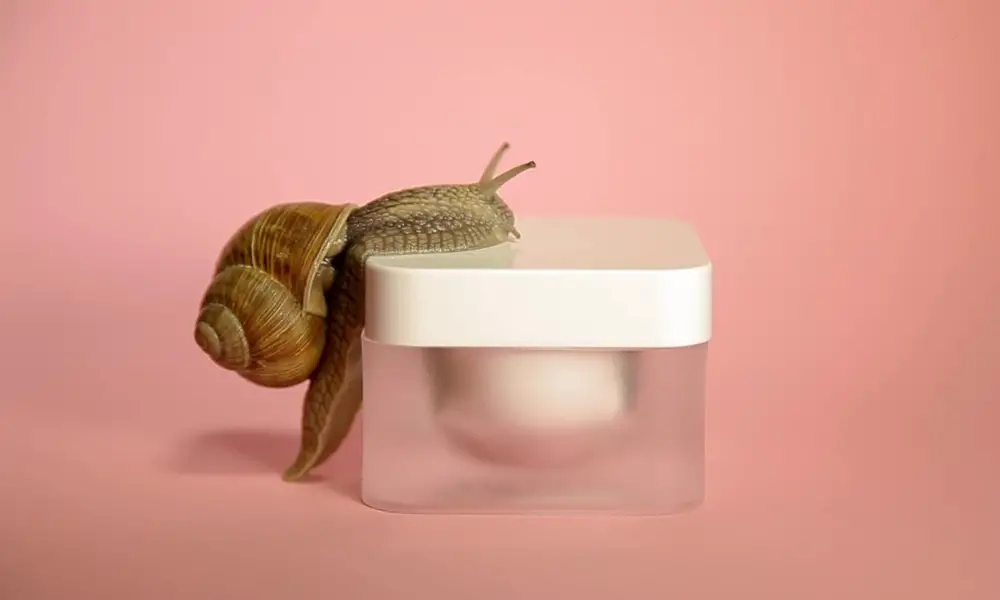Snail Mucin has gone from humble slime trails to sought-after skincare, but how is it made? Is it cruelty-free and vegan to cover your face with snail slime?
Although snail mucus can be considered cruelty-free, many extraction methods can shorten the snails' lifecycle and even cause death. Snail mucus is an animal derivative, so it cannot be considered vegan.
Since snail mucin is not vegan, we're here to help you find the best alternatives - with product recommendations. And, yes, some brands source snail mucus humanely; so keep reading if you’d like to find them.
Is Snail Mucin Cruelty-Free?
Context is key. Snail mucin can be cruelty-free if harvested in a way that does not harm the snail or shorten its life span. The conditions in which snail are bred, grown, and kept also contributes to this.
If a snail farmer chooses to keep snails in an outdoor shelter with various plants, the snails are less likely to be in cruel conditions. However, a snail farmer harvesting in a small, industrialized space will have snails show similar symptoms to other caged animals.
These include shortened life spans, reduced immunity, reduced reproduction, and increased infant fatalities.
Scientifically, we don’t know if snails feel pain or not. All we know is that they respond to pain and threats with defence mechanisms.
One of which is mucus secretion.
So when it comes to harvesting snail mucin – there are a couple options to consider.
Some labs opt for the gentlest means possible, while others starve snails, use acid, or agitate them.
Those methods sound cruel to us.
What is Snail Mucin?
Snail mucin is the slimy trail left behind by snails as they move around.
This magic goo serves many functions in keeping a snail safe, well fed and close to potential mates.
Mucin help snails move safely as it lubricates their path, it is also adhesive and protects their delicate body from abrasions, as well as pathogenic or predatory attack.
And it doesn't end there. Scientists have also found that trail mucus has a blend of pheromones that allow for "chemical communication".
This means mucus trails help other snails find food faster and signal whether they're close to a potential mate.
Unfortunately humans cannot reap any of those chemical benefits – it's what the mucus is made from that interests us.
Snail mucus contains glycoprotein and hyaluronic acid, making it a highly useful skincare ingredient.
What are the Benefits of Snail Mucin for Skin Care?
The main benefits of snail mucus are:
Snail mucus is suitable for all skin types, but especially dry skin because it boosts hydration levels. This ingredient is also non-comedogenic, meaning it won’t clog pores.
One of the first beauty brands to use snail mucus was in Chile. Korean Beauty latched onto the trend pretty quickly and became obsessed.
Multiple brands use snail mucus as the star in product lines because of its hydrating, gentle, nutrient-dense qualities.
Find out why K-Beauty is so popular (and what it’s all about) here: Why Everyone is Obsessed with K-Beauty: The Top 17 Reasons.
As Korean Beauty’s popularity has soared globally, many North American brands have also used snail slime in skincare and watched as sales spiked.
Dermatologists and medical professionals give mixed reviews. Not many studies back up the claims, but there is anecdotal evidence about the benefits of snail mucus.
So, how does it go from a snail slime trial to a skincare bottle?
How is Snail Mucin Collected?
There are multiple ways of collecting (or harvesting) snail mucus. Not all of them are pretty.
Some are still under wraps from labs and companies that don’t want to reveal trade secrets. All of these companies swear that snails aren’t harmed in the process.
But that wasn’t always the case.
Historically Cruel Methods of collection
As far back as ancient Greek and Roman times, snails have been dunked in salt water or vinegar solutions to force mucus secretion.
The process is stressful for the snails. Some farmers and product developers even claim that this stress lessens the mucus quality. And, by the end of the process, snails don’t make it out alive.
Do these historical extraction techniques live up to the modern consumer's standards?
Not in our opinion.
New Ethical Methods of collection.
COSRX, the most well-known snail skincare purveyor, gets its snail mucus from CoSeedBoPharmCo. Giant African Snails are left in a dark room to roam around over mesh for a few hours. After this, the mucus is collected from this mesh material.
The International Institute of Heliciculture has developed another harvesting technique in Italy, where snail farming has increased by 300% in the last two decades.
It involves crates of snails going into a machine where they get gentle steam. This is to clean the snails using water and ozone.
Then they are sprayed with an acidic solution that makes them release mucus as a defense mechanism.
The inventor of this machine calls it a ‘spa for snails’; he developed it after research showed that mollusks produce mucin when stimulated, not just under threat. From the 44 pounds of snails, 118 pounds of mucus is ‘milked.’
The OzoSnail, a machine developed by another Italian lab (Donatella Veroni), works very similarly. However, it claims to keep the snail's health intact without damaging the animals.
Unfortunately, no information on how this is done is available.
Where Can I get Guilt-Free Snail Mucin?
Captive snails’ quality of life and diets are at the mercy of the farmers who keep them.
Snail farmers are invested in keeping their snails health. Longer life spans equal more snail mucus to milk. However, if kept in small spaces and milked intensively, snails reach smaller sizes, reproduce less, and have increased mortality rates.
Finding skincare that values the treatment of the snails they get their prized slime from is best.
These brands use snail mucin and are certified cruelty-free!
These brands don’t have cruelty-free certification by are cruelty-free by our standards:
But if you’re vegan, should you reach for snail mucus skincare from these brands?
Is Snail Mucin Vegan?
Now that you know about all those skin benefits, can vegans use snail mucus in skincare?
No.
Because snail mucus is an animal byproduct, it can not be vegan.
Does that mean you can’t get the same benefits? Let’s find out.
Are there vegan alternatives? (And Do They Work)?
Some people don’t enjoy the texture of snail mucus products. Even though it's non-comedogenic, it can feel thick, sticky, and cloying on the skin.
Whether it’s your animal activism or sensory issues that make you want to give snail mucus a pass. You can find the same benefits in other vegan alternatives.
Many of these ingredients are tried and tested, not just in labs but with beauty fans around the world.
Vegan alternatives that have the same benefits
Vegan Alternatives | Benefit | Brand & product |
|---|---|---|
Hyaluronic Acid | Hydrate | Plump Plump Hyaluronic Serum |
Edelweiss | Soothes | The Body Shop Edelweiss Bouncy Sleep Mask |
Glycerine | Softens | The Ordinary NaturalMoisturizing Factors + HA |
Niacinamide | Improve texture | Freshly Juiced Vitamin E Mask |
Brighten and hydrate | Galactomyces | Rose Galactomyces Synergy Serum |
Where else are snails used? (MUST READ for vegans)
Snails have been eaten for centuries in Europe and Asia. It’s not surprising that those countries adopted snail mucus skincare exceptionally quickly.
Remember the snails from The International Institute of Heliciculture? After they receive their steam clean and acid spray three or four times, they are euthanized, and every part of the snail is used.
What else can snails be found in?
While it might be difficult for vegans to read this, there’s a potential upside.
Is Skincare With Snail Mucin Sustainable?
The fact that snails are used in food, cosmetics, and medicine shows that they aren’t discarded after they’ve yielded mucin for skincare.
Instead of creating waste, companies producing snail mucin for skincare do see the opportunity to be sustainable.
Another good thing is that snail farms don’t generate the harmful waste that animal agriculture, and the fishing industry do.
In saying this, over two decades ago, snail cultivation surged as populations began to dwindle in the wild. Over 2000 species of snails are listed on The International Union of Conservationist Red List.
But just three species of snails are commonly farmed for skincare. These include the Little Grey, Common Garden Snail, and the Giant African Snail.
So, we have to ask ourselves. Are snail populations really receiving the benefits of being cultivated? Or do people reap most of the benefits (yet again)?
Conclusion
Snail mucus claims to have a wide range of benefits, and while we’re still waiting on scientific evidence, the beauty industry is cashing in.
Skincare lovers report amazing results and, luckily, some of the most popular beauty brands using snail mucus care about treating these little animals.
However, most beautiful houses aren’t so meticulous in their ingredient sourcing.
Whether you view snail mucin as cruelty-free, ethical, and sustainable is up to you now that you have the facts.
If you add some of these products to your skincare routine, we ask that you send a little gratitude to the snails that help you glow.


